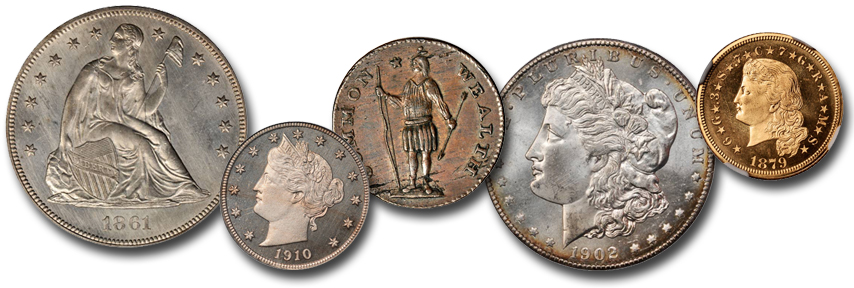
Answer: A die scratch is evidenced by a raised line on a coin caused by a recessed or incuse scratch on a die. This scratch could have been caused in any number of ways, including by the stray impression of a file or of a graving tool. Groups of minute parallel die scratches are called die striations or die striae and were caused by trimming a die with a file during the die preparation process, or grinding the surface of a die to remove ridges and burrs (such as after the master die impressed the letters and devices).
While die striations can be seen on many different issues, they are particularly obvious on Liberty Seated silver coins of the 1860s (nearly all Mint State silver dollars have them) and on Mercury dimes of the 1920s.





